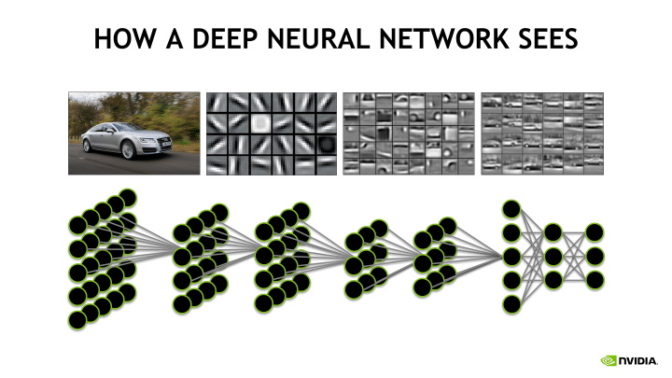When you shop for a car, the first question is what model — a Honda Civic for low-cost commuting, a Chevy Corvette for looking good and moving fast, or maybe a Ford F-150 to tote heavy loads.
For the journey to AI, the most transformational technology of our time, the engine you need is a machine learning model.
What Is a Machine Learning Model?
A machine learning model is an expression of an algorithm that combs through mountains of data to find patterns or make predictions. Fueled by data, machine learning (ML) models are the mathematical engines of artificial intelligence.
For example, an ML model for computer vision might be able to identify cars and pedestrians in a real-time video. One for natural language processing might translate words and sentences.
Under the hood, a model is a mathematical representation of objects and their relationships to each other. The objects can be anything from “likes” on a social networking post to molecules in a lab experiment.
ML Models for Every Purpose
With no constraints on the objects that can become features in an ML model, there’s no limit to the uses for AI. The combinations are infinite.
Data scientists have created whole families of machine learning models for different uses, and more are in the works.
A Brief Taxonomy of ML Models
| ML Model Type | Uses Cases |
|---|---|
| Linear regression/classification | Patterns in numeric data, such as financial spreadsheets |
| Graphic models | Fraud detection or sentiment awareness |
| Decision trees/Random forests | Predicting outcomes |
| Deep learning neural networks | Computer vision, natural language processing and more |
For instance, linear models use algebra to predict relationships between variables in financial projections. Graphical models express as diagrams a probability, such as whether a consumer will choose to buy a product. Borrowing the metaphor of branches, some ML models take the form of decision trees or groups of them called random forests.
In the Big Bang of AI in 2012, researchers found deep learning to be one of the most successful techniques for finding patterns and making predictions. It uses a kind of machine learning model called a neural network because it was inspired by the patterns and functions of brain cells.
An ML Model for the Masses
Deep learning took its name from the structure of its machine learning models. They stack layer upon layer of features and their relationships, forming a mathematical hero sandwich.
Thanks to their uncanny accuracy in finding patterns, two kinds of deep learning models, described in a separate explainer, are appearing everywhere.
Convolutional neural networks (CNNs), often used in computer vision, act like eyes in autonomous vehicles and can help spot diseases in medical imaging. Recurrent neural networks and transformers (RNNs), tuned to analyze spoken and written language, are the engines of Amazon’s Alexa, Google’s Assistant and Apple’s Siri.

Pssssst, Pick a Pretrained Model
Choosing the right family of models — like a CNN, RNN or transformer — is a great beginning. But that’s just the start.
If you want to ride the Baja 500, you can modify a stock dune buggy with heavy duty shocks and rugged tires, or you can shop for a vehicle built for that race.
In machine learning, that’s what’s called a pretrained model. It’s tuned on large sets of training data that are similar to data in your use case. Data relationships — called weights and biases — are optimized for the intended application.
It takes an enormous dataset, a lot of AI expertise and significant compute muscle to train a model. Savvy buyers shop for pretrained models to save time and money.
Who Ya Gonna Call?
When you’re shopping for a pretrained model, find a dealer you can trust.
NVIDIA puts its name behind an online library called the NGC catalog that’s filled with vetted, pretrained models. They span the spectrum of AI jobs from computer vision and conversational AI and more.
Users know what they’re getting because models in the catalog come with résumés. They’re like the credentials of a prospective hire.
Model resumes show you the domain the model was trained for, the dataset that trained it, and how it’s expected to perform. They provide transparency and confidence you’re picking the right model for your use case.
More Resources for ML Models
What’s more, NGC models are ready for transfer learning. That’s the one final tune-up that torques models for the exact road conditions over which they’ll ride — your application’s data.
NVIDIA even provides the wrench to tune your NGC model. It’s called TAO and you can sign up for early access to it today.
To learn more, check out:
- Our web page on pretrained models
- A guide to the NGC catalog
- Our web page on Tao and related tools
- A developer blog on using pretrained models for computer vision to build a gesture recognition app
- A talk from GTC 21 on transfer learning (free to view with registration)
The post What Is a Machine Learning Model? appeared first on The Official NVIDIA Blog.
